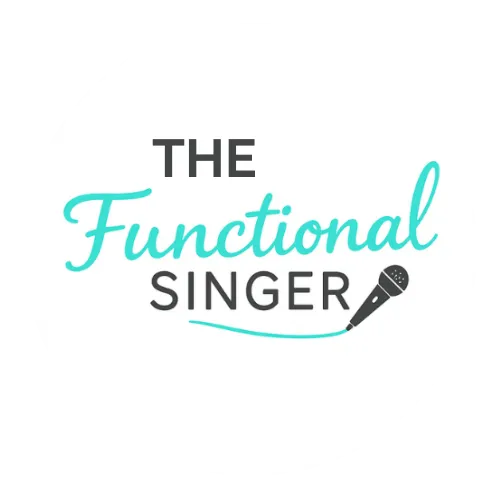See Our Latest Blogs
Explore our blogs and learn about singing❤️

Breathing Training For Singers: Set Up Your Brain To Sing From The Inhale!
Breathing Training For Singers: Set Up Your Brain To Sing From The Inhale!
Breathing Training For Singers: Set Up Your Brain To Sing From The Inhale! Video transcript (modified to suit blog format)
Today we’re going to talk about breathing. Breathing is crucial for singing. The way you breathe in defines your singing, and it’s not a general thing.
Every breath you take will set up your voice differently. So even if you are not a singer and you just want to improve your voice for communication purposes, this applies to you as well.
Your breathing affects your voice in many ways. The main one is that the way you breathe is linked to your nervous system. One of the reasons why our voice is tight and we find it hard to learn to sing is because our brain is used to associating singing with threat. The way you breathe, can either tell your brain that singing is safe, in which case you’re gonna open your voice and singing is gonna be natural, or it can tell your brain that you are in a dangerous situation even if you are not. And that is gonna make your singing very hard and challenging unnecessarily (this is what most people do most of the time, even experienced singers).
And so today, we are going to work a little bit with sense of perception, and you are going to explore what is a way of breathing that helps you the most right now.
That, of course, will change with time.
Mouth Breathing for Singing
So to start with, we are going to breathe in through the mouth today. The method of singing that has been the most effective for me and my students (the Rabine method, Functional voice pedagogy), uses this way of singing, in a particular manner. And I know that a lot of people will tell you to breathe through the nose instead. Yes, nose breathing is healthier for most activities and for resting. But for singing, we are going to breathe in through the mouth as it is a more functional way to do it. However, you might find this itself threatening at the beginning, in which case you might have to come back to it later.
But the reality is that when we sing songs, we do breathe through the mouth, so we have to train it. We just don’t have time to breathe through our noses within songs. But also, breathing through the nose creates some resistance in the vocal system when you sing which is not beneficial for your voice.
I’m not gonna talk about that too much right now. That’s for another day (let’s take it easy with the controversial topics!). But if you want to give it a go, then watch the video and try the few little things that we are going to explore.
This is an exercise that you can apply to your songs right away, not only to your breathing exercises and your vocal warm-ups but also to your songs.
What we’re going to do is we’re going to explore breathing through different vowels, And we are going to try to figure out which vowel shapes are better for us today.
The objective of this exercise is to find a way of breathing that lowers the perceived threat. Of course, that is subconscious. But some signs are going to tell you whether your brain considers your environment to be safe or not. It’s extremely, important that, for singing, your nervous system associates singing with safety and comfort.
How To Tell Which Breathing Exercise Is Better For Your Singing
We’re going to practice breathing through different vowels. Let’s talk about four ways that you can identify today which vowels are better for you to inhale.
1.Ribcage expansion
So the first one is ribcage expansion.
Check that your ribs are expanding when you inhale. And that inhale shouldn’t strongly tighten your belly (demonstration on the video). When you tighten the belly strongly like that, you are protecting all your organs. So the brain understands that you are in a dangerous situation.
So ideally when you breathe in you expand your ribs, but the belly doesn’t tighten like that. Your ribs expand without the belly pulling in too much.
2.Breathing noises for singing
Secondly, we are going to observe how much noise you make when you breathe.
Ideally for singing, you don’t want to make any noise. You want silent breathing because when you make noise, a lot of muscles are engaging, and they are getting in the way of your free singing. You are using accessory muscles that you don’t really need for singing. Probably need them for other situations, but singing and breathing are different.
So if you are breathing and you find yourself making a lot of noise, everything tightens up right away. That’s not what we want. We want to find noiseless breathing and train it to make it voluntary whenever we sing.
3.How is the rest of our body reacting to your inhale? Are you tightening your shoulders up when you breathe for singing?
Thirdly, you want to check how the rest of your body is reacting to your breathing. If you find your body tightening up and your shoulders coming up when you breathe in, that is not functional breathing FOR SINGING.
4.Jaw tension when singing – from the inhale
The last thing we’re going to check for this exercise is how much your jaw is tightened when you breathe in. So if you breathe in and you are tightening your jaw while you do so, then that is not a good breathing type for you to try. You have to find a breathing in which the jaw is okay with being soft (although not completely relaxed – another controversial topic for another day).
Those are the 4 signs that we are going to look for in this exercise. And I’m going to suggest two vowel shapes today that you can use for your inhale. Of course, there are many more, but for today, we’re going to try those two because they are very different, and they will work differently depending on the moment of your singing journey that you are currently on.
The ‘Ooh’ Shape
The first vowel that we are going to explore is the vowel ‘ooh’ (like in ‘zoom’).
For this vowel, we are going to project the lips forward without tensing other part of our lips (watch the video for a demonstration). This starts engaging the ’rounding’ muscles which is beneficial for singing. Start gently extending your lips forward in an ‘ooh’ shape while the jaw gently opens a bit.
Generally, if you don’t have a lot of singing training or if you have been training in ways that are not too functional, you might find yourself tightening your jaw while you try to project your lips forward. If this is the case, you can try placing a finger between your teeth while you try this exercise, in such a way in which your teeth are apart ‘resting’ on your fingers but without ‘biting’ yourself.
Watch the video for a more in-depth explanation and a demonstration.
While you try inhaling in this way, check if your breathing is functional to singing by observing the 4 points explained above:
The ribcage expands without the belly tightening
You’re breathing in a noiseless manner
Your shoulders and neck remain relaxed while you inhale – you are keeping your shoulders down
Your jaw is mobile and not tightened.
The ‘Uh’ shape
The second vowel shape that I want to show you today for breathing for singing, it’s a little bit more advanced.
The brain is gonna perceive it as a little bit more threatening because it’s more open and there is more space in your mouth, which can make you more vulnerable.
If you have already done some work with the ‘ooh’ shape and it’s easy for you, then this might be the next step for you.
And it’s great because it brings more air in. So when you are ready, this is a good thing for you to train your breathing and voice as it will allow you to support your sound more easily.
Try this way of breathing in with our checklist:
The ribcage expands without the belly tightening
You’re breathing in a noiseless manner
Your shoulders and neck remain relaxed while you inhale – you are keeping your shoulders down
Your jaw is mobile and not tightened.
Learn to sing from a holistic and functional approach in Auckland or ONLINE from everywhere!
Explore our programs HERE
Don’t miss out on our singing videos!
Subscribe to our newsletter for weekly original singing articles and videos, and to receive all the news about our latest online singing programs!
Some feedback from past students!
Frankie Lam

Highly recommended; Jorgelina, the primary singing instructor knows her stuff and really helped guide me through finding my mixed voice.
She has huge amounts of knowledge on the science and theory behind singing and approaches lessons in a very structured but still personalised manner. Very happy with my decision to take lessons here.
Jess Reeve - Taylor

I really struggled with the high notes before coming to Jorgelina! She's coached me through so many techniques and although there is so much to learn I feel like I've seen lots of progress already. My confidence has grown massively since joining the group classes too and she encourages performing at every opportunity. I love that Jorgelina takes a holistic approach to singing and understands that it's not just about sounding great, the voice also has strong connections to the body and mind. Thanks Jorgelina!
Rupert Wilson

Bruh. Jorgelina is an awesome singing teacher! Super knowledgable, very engaged and 100% passionate. She's helped me a lot. Her methods and techniques feel organic and natural. She moves at your pace and is super supportive about you achieving your singing goals. Would recommend her to anyone with a vagus nerve (thats everyone btw!).
Get In Touch
Email: [email protected]
Learn to sing with us!
© 2025 Auckland Contemporary Singing School - All Rights Reserved


Facebook
Instagram
Youtube